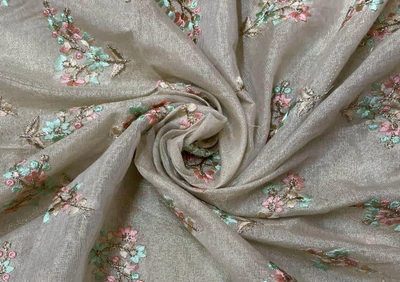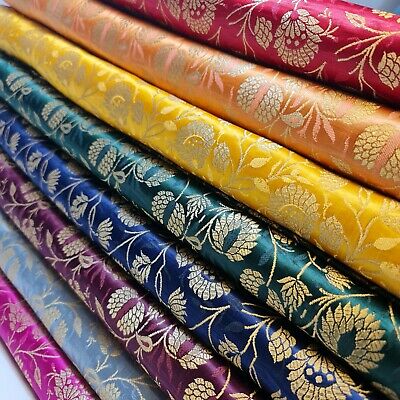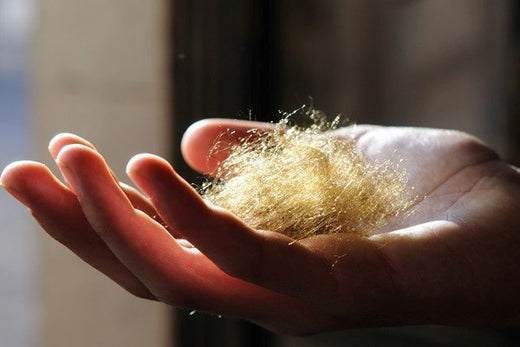
Silk : The Clothing of Gods
Silk as a fabric has long been referred to as the clothing of gods due to its natural and lustrous shine. Although we can now buy silk fabrics at inexpensive rates at online fabric stores, there have been countless wars fought over the fabric and making it was a long and very time consuming process. China as far as 8,500 years ago was manufacturing silk and had a monopoly of its production for the longest time. The trade routes the country used to transport silk to countries like India, Europe, the Mediterranean etc. became so famous that it is to this date still called the silk route. Many civilizations like the Persians and Koreans directly benefited from the trading silk on the silk route.
Silk as a fabric is extremely soft and has an almost slippery texture that is very rare in natural fibers. The fabric is also extremely flexible , with there being many different and complex techniques of weaving it. It is also a very friendly fabric as fabrics like cotton are often mixed with it to create new variables like cotton silk.
How it is made:
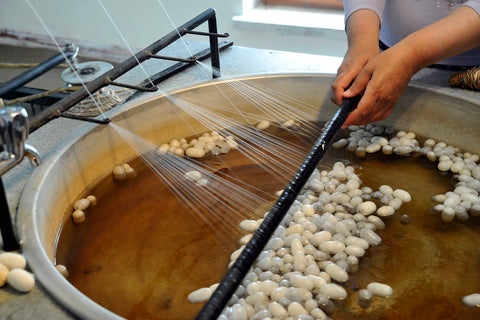
Silk is made out of natural materials , one of which is silkworms or bombyx mori larvae .These silk worms are harvested to get strands of silk which are then woven in a triangular cross section pattern to later be dyed and formed into the silk fabric we know. The triangular cross section pattern creates a prism like effect, giving the fabric its famous shine when under light.
The silk making process is a complex seven step process that has taken humankind hundreds of decades to perfect. The seven steps are :
- Heating the cocoons of silkworm larvae
- Unraveling the now heated cocoons to reveal an intricate set of silk strands
- The silk strands are loaded onto a reel where multiple strands are attached to one another
- Silk producers then twist the now strong strands to produce balls of silk yarn
- The silk yarns are then put through rollers to make the balls of yarn more uniform
- The manufactures then either dye the yarn or bleach it.
- The now dyed or bleached yarn is woven into larger sheets of fabric by weavers. Many of which still do this and many other parts of the process by hand.
What can it be used for :
Silk is an extremely dynamic and versatile fabric with its uses ranging widely. A few uses of the fabric include:
- Clothing : this one is a bit obvious as clothing is one of the most common uses for the silk fabric. In Fact silk sarees are extremely famous all over the world. Many parts of India are solely dedicated to creating their own versions of a silk saree like Kanchipuram which produces the famous Kanchipuram saree. Other than saree, silks can be used for a variety of other clothing pieces such as shirts, pants, dresses and inner wear. The fabric is such a staple that every decade there has been at least one fashion trend that revolves around silks. The fashion trend for this decade is the silk pant suit combo for women.
- Furniture : silk is a very strong fabric especially when mixed with cotton. This makes it perfect for people looking for glamorous fabrics to use for upholstery purposes. It also is a doctor recommended material for duvets and bed sheets because of its hypoallergenic properties. Many believe it helps reduce pimples and acne. It is also a preferred material for curtains and wall hangings because of its shine and luster.
- Industrial uses : True to its nature as a versatile fabric, silk is used in a variety of industrial products and manufacturing processes. It is used by many parachute manufacturers to make their products due to it being so durable and lightweight. Many surgeons and medical practitioners use silk sutures to close wounds and surgical openings. This is because the fabric has very thin fibers on top being hypoallergenic and having antibacterial properties.
Different types of silk fabrics:
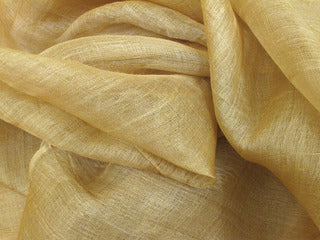
Muga silk is one of the cheapest and easiest silk fabrics to manufacture. Most silk fabrics used in textiles are this kind of silk. Even though it is one of the easiest silks to manufacture , muga silk fabrics are world renowned for their durability , strength and softness.
This is the go to silk fabric for anyone looking for a vegan , cruelty free type of silk. The production of this does not require the killing of castor silk worms and is often termed as the “peace silk”. Unfortunately this silk is rarely made around the world but the ones that are made are more heavier and durable than mulberry silk.

After Mulberry, Tasar silk is the second most commonly produced silk in the world. This silk type is native to India and the silk worms used to produce these are wild. Japan also produces these silks but their worms produce fabrics that are mainly green.
Spider silk is one of the more expensive silks to produce. This is because spiders can't be bred domesticately like silkworms. This makes it too expensive for textile manufacturers to produce. So instead of textiles, this silk is used in many industrial products like bulletproof vests, microscopes, telescopes etc.
Native to the state of Assam, the muga silk industry has employed residents of Assam for generations.Muga silk worms that produce this silk are semi-domesticated. Although it is not known widely around the world like its other silk counterparts, this silk fabric carries with it a very rich culture and history.
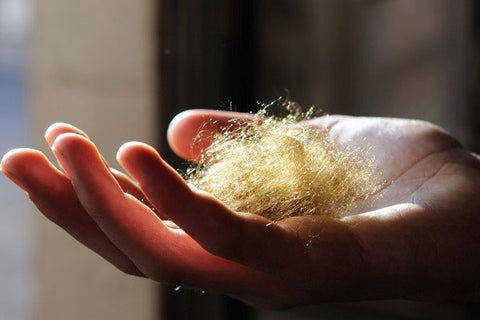
A certain species of mussel native to the Mediterranean Sea produces small quantities of a silk-like fiber. Residents of Taranto, Italy have domesticated these mussels, and this town produces small quantities of sea silk fabric, which is also called “mussel silk.”
A species of silkworm called Pacypasa atus produces coan silk, which is native to certain parts of Greece, Turkey, and Italy. These silkworms feed on pine, juniper, and oak trees, and while coan silk was widely used in Ancient Rome, coan silk fabric production today is limited, and this type of silk is mainly used to strengthen other types of silk fibers.
The reason it is so important to learn about how silk is made and what kinds of silks are available out there is because as the world moves more and more into the digital age and online fabric store start to have better quality of fabrics and better range than offline stores, it can be confusing for a customer on what to buy. Knowing your materials is important as it helps you choose the right fabric for you and empowers you to make the right choice after weighing all the pros and cons.




